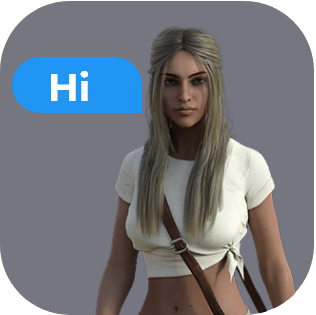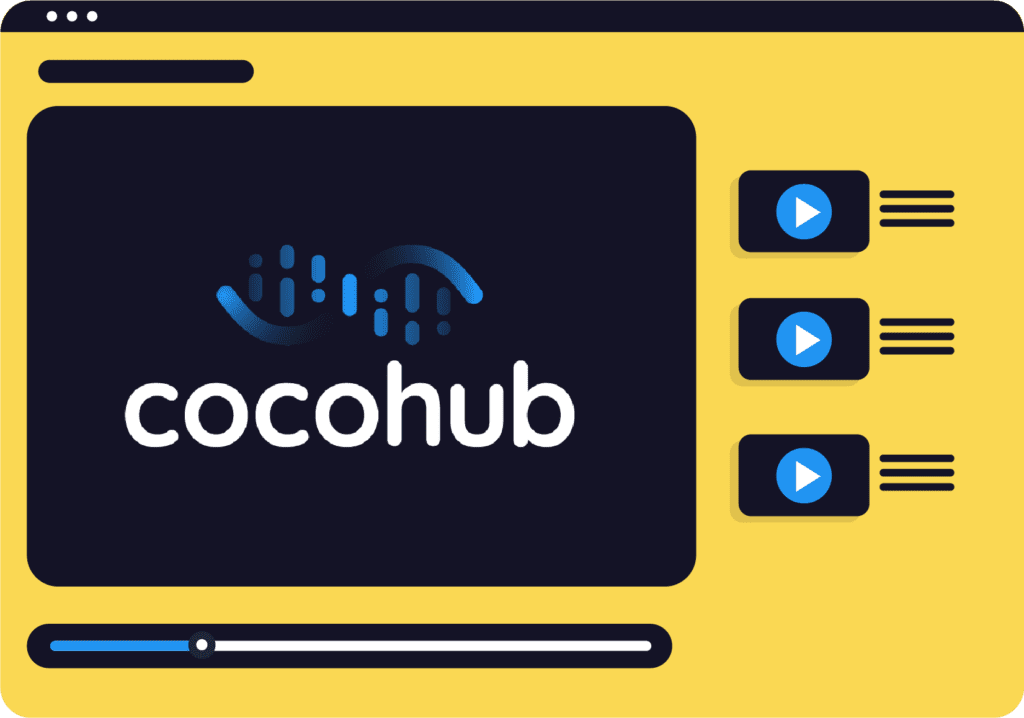For Maaike Coppens, conversation design was a destiny. Already a UX design and language enthusiast, she stormed the field of conversational agents and became an international expert and speaker, urging companies and people to get the user the best experience – starting with the smallest unit of the conversation itself: the single word. On the latest episode of Taking Turns, Coppens – co-founder of Promptful.io – talks the principles of a great UX, and recalls a failure that made her learn a lot.
• HOW DID YOU GET INTO CONVERSATION DESIGN?
Conversation design and me and has been kind of a love story, loads of years ago when I was still young and fresh… I have an academic past in linguistics, so I was always very passionate about words. About writing, about how language works. And I have always been very passionate as well about making sure that digital solutions are useful and intuitive to users, and so I started doing UX design. I found it just a perfect fit once conversational agents became more mainstream. It’s the marriage of my two main passions, UX design and language, and so it was a very natural step.
DO YOU WANT TO BECOME A COCO DEVELOPER? JOIN OUR TRAINING PROGRAM!
• WHAT’S THE PROJECT YOU’RE MOST PROUD OF?
I usually work with a lot of big brands. And I’d say that it’s not necessarily a specific bot or project that I’m really proud of, whereas I’m proud of the methodology and the different voice x design sprints that I’ve run with the companies, and also the way those companies and my clients have managed to put UX front and center throughout their work with me. It’s rather the way and progress that companies have made throughout the process of building chatbots. From just building basic FAQ chatbots to now really focusing more on what the conversation experience is like.
Furthermore, I’m also proud of the voice community. Because the more we move forward, the more voices start to arise for inclusive design and conversation design for accessibility. I’m proud of all of those things.
💬 Previously on Taking Turns
Michelle Zhou: “Humans talking to machines are brutally honest”
Mary Tomasso: “Don’t just write a conversation – speak it”
Michelle Parayil: “Bad copy can ruin a customer’s day”
Henry Ginsburg: “Want to get in? Grab a pen and start writing”
Kent Morita: “In the right context, humor can be very effective”
Breakup, Pokemon and YASS!: Greg Bennett talks conversation design
Hillary Black: “Chatbots are like Social Media on its early days”
• YOU’RE AN AMBASSADOR AND ADVOCATE FOR WOMEN IN VOICE. WHAT ARE THE MAIN CHALLENGES FOR WOMEN IN THIS INDUSTRY?
As with any digital industry, I think it’s important to give a voice – as a manner of speech – to everyone. Inclusion is a very big part of my design philosophy. And therefore when Women in Voice, and Dr. Joan Palmiter Bajorek started women in voice, I found it very natural to be part of it. Because it’s important for me to give anyone – and especially women – a voice within any digital industry. And I find that the voice ecosystem in particular has been very successful at giving women a preponderant space.
I think that women in voice has already made a difference in giving women that voice, space and place. But I think there’s also still a lot of work and advocacy to be done. And I think that even though it’s called women in voice, it’s really a place, an organization of inclusion and of diversity and that’s really at the heart of what we’re trying to do.
• WHAT’S THE ONE THING EVERY CHATBOT/VOICE ASSISTANT MUST HAVE, IN YOUR OPINION?
A good user experience… a design that makes sure that users can accomplish what they set out to do in the most natural and quick and efficient way possible. Chatbots and voice assitants are a utility, a tool, a digital interface, and it’s really important that more than for any other interface, words are carefully chosen. Sometimes we choose a word might seem very standard, normal. But some people can percieve it as being offensive or aggressive.
Sometimes you’re messaging with people, for example, and you read the message, even in a human-human conversation. And you go – oh wow, he got up on the wrong foot. Then you reach out to the person and say, ‘oh, well, last time you sent me that message, I felt a bit offended’. He goes ‘oh, that’s not at all what I meant to say’. All of us are going through it, and that’s because words are not chosen very distinctively, very proactively. We just put out the message.
don’t insult anybody
When trying to go too fast, designing these conversations, we might have a tendency to think about the sentences, the responses, but not to hyper-focus on each word. We need to make sure these words work for the large majority of people and might not offend anyone or might not to come over as aggressive.
And it’s really important because a lot of it has been said about, for example, sentiment analysis. People say, oh, that’s great, and that way a bot interprets exactly what the user says, and can reply accordingly, and that’s all technical marvel and it’s great. But it starts before that, while designing the conversation. We already have to think what impact will our choice of words have on the user. Because it’s all good and well to be able to detect that the user is disappointed or angry or whatever, and then have a reply that tailors to that sentiment. Let’s already think about how to make sure that I don’t get the user to that point where he’s angry, upset or disappointed.
- CoCo & Co Content reCommendations
- How to build a bot using the four-turn template?
- Can the travel industry recover with the help of conversational AI?
- How can Conversational AI help in the fight against the Coronavirus?
- The Feedback Loop: A basic chatbot developent process
• TELL US ABOUT AN AWKWARD, AMAZING OR CURIOUS THING THAT HAPPENED TO YOU in conversation design.
I’m actually going to tell you about a failure. Failures are a great way to learn, and sometimes they are in unexpected places. I was designing a voice interface in a healthcare environment, and the error handling that we did was ‘I’m sorry, I didn’t hear you, can you please repeat?. It might feel very very standard, like a lot of voice assistant or chatbots use that kind of phrasing. And we didn’t think twice about it.
We put the agent out there with the users, and one of them told me, ‘I find that very offensive’. When I asked why, he said ‘Well, I have hearing problems, and the fact that a system says ‘I didn’t hear you’ reminds me of the fact that I have hearing problems. It’s offensive to me to be reminded of that. And then, sometimes it asks that I talk more loudly or less loudly and It just reminds me of incapacity that I have. So the fact that a robot says that kind of thing doesn’t resonate with me’.
And I was like, ‘oh my god’, because we are designing these standard things. You say okay, there’s silence. So naturally you say ‘okay, I didn’t hear anything’. It just seemed like such a small sentence, but actually it triggered a big reaction.
Words need to be carefully chosen. Sometimes a word might seem very standard, normal, but might be perceived by others as being offensive or aggressive
– MAAIKE COPPENS
• WHAT TIPS CAN YOU GIVE TO ASPIRING beginners, OR TO PEOPLE WHO WANTS TO JOIN conversation design?
Just start. We are all different people with different ways of learning. So there are eternal learners like me – there’s not a course I wouldn’t take to learn something new. Then there are more practical Hands-On people and I think that really want to learn by doing, and I think you just think about what works for you from a learning perspective.
There’s a lot of courses out there – it’s also a great opportunity for me to talk about Promptful. Me and Heidi Culbertson started Promptful to do these interactive Hands-On workshops. In those, we take the participants through a voice design creation process. But not just ‘hey, this is the process, learn about it’, but ‘hey, like let’s do these exercises and let’s, at the end, have a prototype’. so that’s for those practical learners out there that really want to get their hands dirty.
There’s other learners that would rather just read stuff and there’s a lot of great books about conversation design. There’s “Designing Bots” by Amir Shevat. And “Designing User Interface” by Cathy Pearl. There’s loads and loads of books out there, and anyone can chat with me, I’ll happily provide a list. I have a library of them…
• TELL US MORE ABOUT YOUR PROMPTFUL, your conversation design company.
We started Promptful because both Heidi and me really want people to get their hands dirty with voice. And also, to share our design philosophy. And to make sure that people think about accessibility and inclusion. More than voice workshops, it’s also about making sure that you think about every single word. And how that influences people’s emotions and how that tailors an experience, and how that can make or break your experience, basically.
Next week, we’ll have Chapter #9 of Taking Turns! In the meanwhile – subscribe to our YouTube channel | Join our Discord community | Sign up for our newsletter | Follow us on Facebook, LinkedIn, Instagram or Twitter











